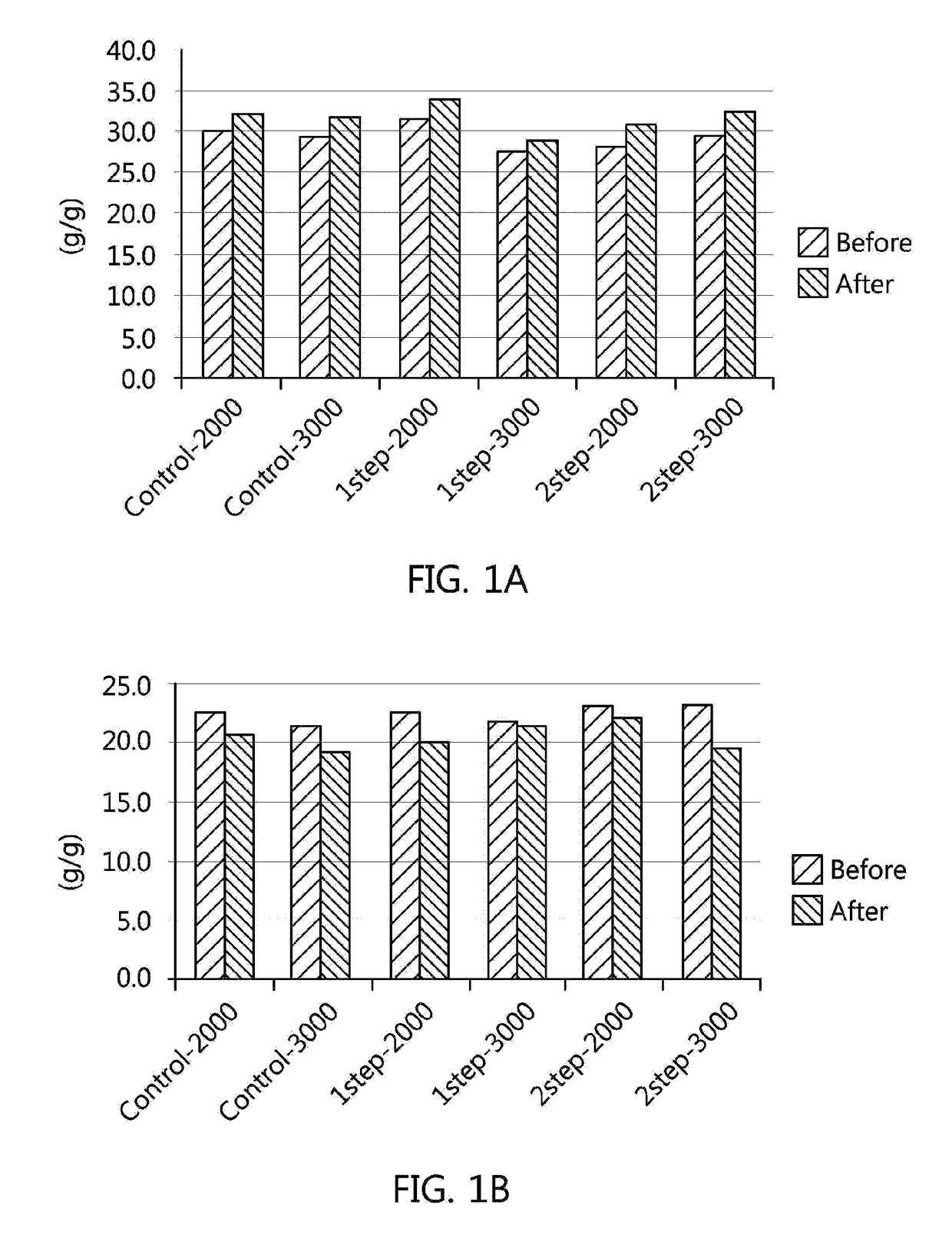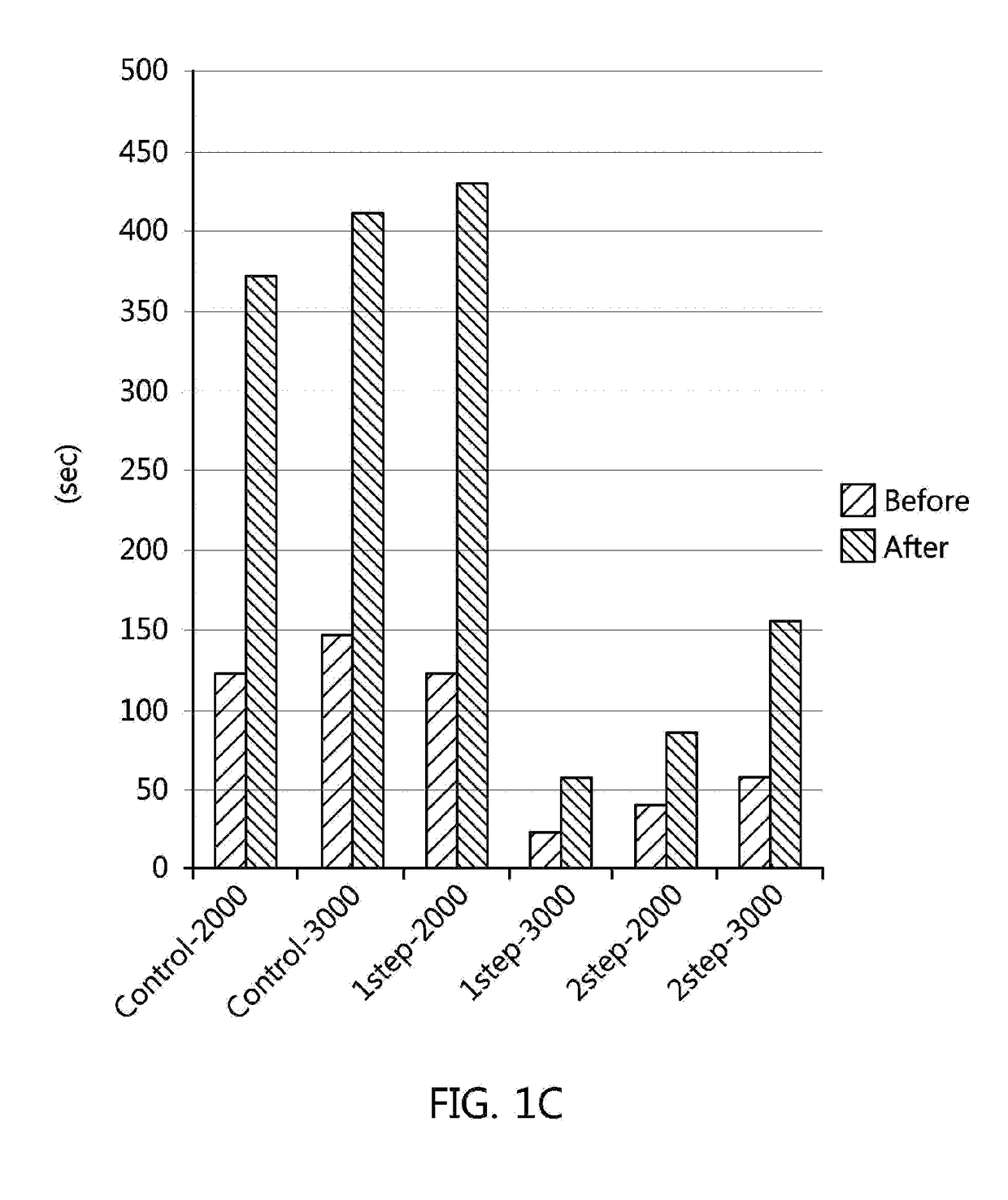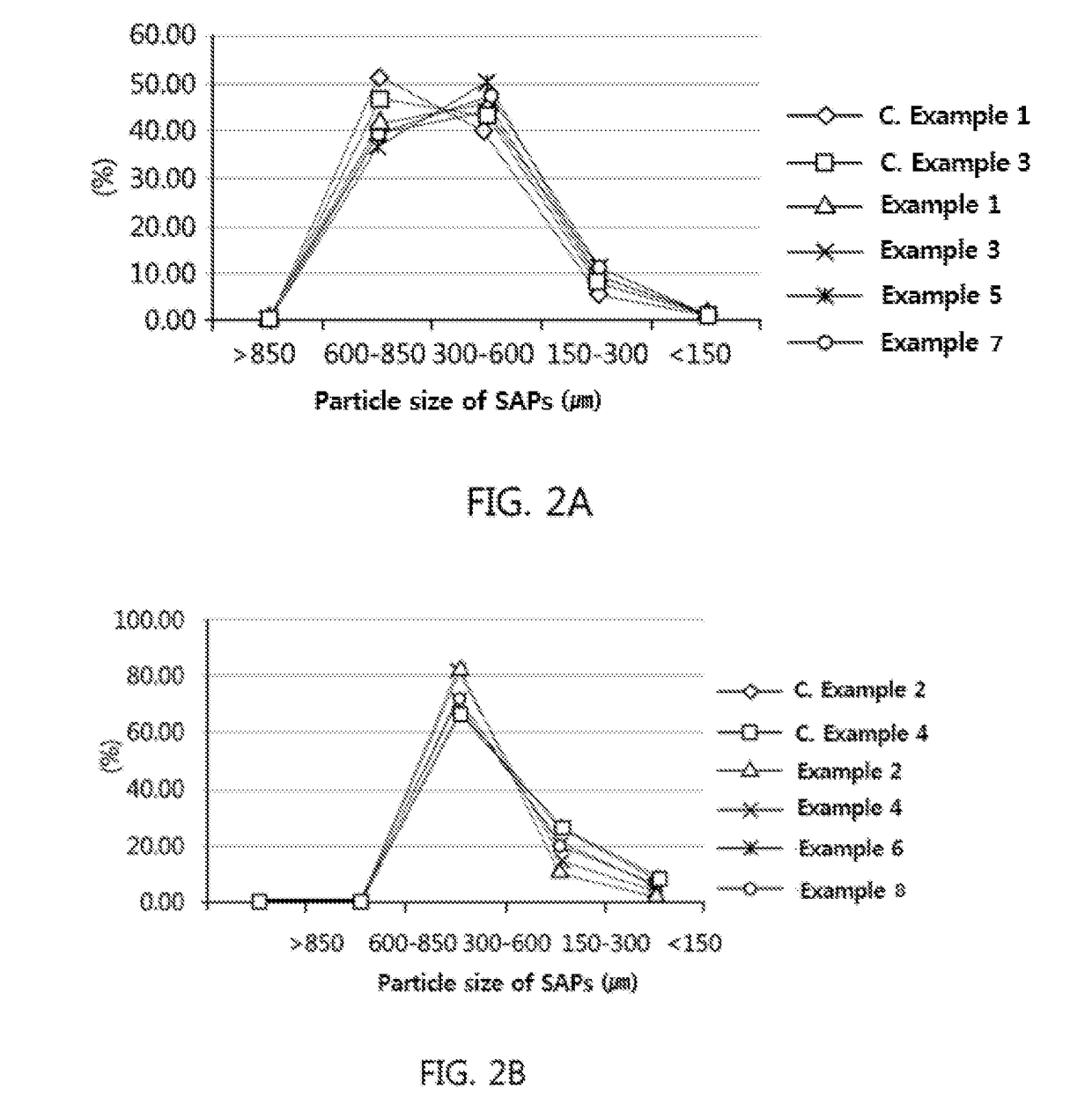Surface cross-linked super absorbent resin and method for preparing same
a super absorbent resin and cross-linked technology, applied in absorbent pads, bandages, medical science, etc., can solve the problems of increasing the stickiness of resin surfaces, affecting the effect of permeability, and affecting the effect of process efficiency, so as to improve the processability and improve the permeability. , the effect of effective reduction of process time and cos
- Summary
- Abstract
- Description
- Claims
- Application Information
AI Technical Summary
Benefits of technology
Problems solved by technology
Method used
Image
Examples
preparation example 1
[0143]In a high-speed mixer, 250 g of the superabsorbent base resin was mixed at 1000 rpm for 20 sec, and a previously prepared aqueous solution (0.5 g or 0.75 g of ethylene carbonate, 0.55g of oxalic acid, 7.5 g of distilled water, and 8.75 g of methanol) was injected into the mixer through a plastic syringe, followed by mixing for an additional 3 min After the mixer was allowed to slowly stop by setting at 0 rpm, the resulting superabsorbent resin was as evenly spread as possible on a SUS tray, incubated for 40 min in an over preheated to 200° C., and then cooled at room temperature. The resin was screened with a sieve to give superabsorbent polymer particles with a size of 300 to 600 pm.
preparation example 2
[0144]In a high-speed mixer, 250 g of the superabsorbent base resin was mixed at 1000 rpm for 20 sec. Separately, 1.6545 g of polycarbonic acid-based copolymer #427 (LG Chem) was dissolved in 18.033 g of distilled water, followed by 1.5625 g of Zr(SO4)2.14-18 H2O (Junsei) and then ethylene carbonate. The resulting solution was injected into the mixer through a plastic syringe and mixed for an additional 3 min After the high-speed mixer was stopped by setting at 0 rpm, the resulting resin was as evenly spread as possible on a SUS tray, incubated for 40 min in an over preheated to 200° C., and then cooled at room temperature. The resin was screened with a sieve to give superabsorbent polymer particles with a size of 300 to 600 μm.
preparation example 3
[0145]In a high-speed mixer, 250 g of the superabsorbent base resin was mixed at 1000 rpm for 20 sec, and 6.25 g of an aqueous solution of Zr(SO4)2.14-18 H2O (Junsei) was injected into the mixer through a plastic syringe, followed by mixing for 3 min. Separately, 1.6545 g of polycarbonic acid-based copolymer #427 (LG Chem) was dissolved in 13.3455 g of distilled water, followed by ethylene carbonate. The resulting solution was injected into the mixer through a plastic syringe and mixed for an additional 3 min After the high-speed mixer was stopped by setting at 0 rpm, the resulting resin was as evenly spread as possible on a SUS tray, incubated for 40 min in an over preheated to 200° C., and then cooled at room temperature. The resin was screened with a sieve to give superabsorbent polymer particles with a size of 300 to 600 μm.
PUM
| Property | Measurement | Unit |
|---|---|---|
| water-soluble | aaaaa | aaaaa |
| weight | aaaaa | aaaaa |
| Chemical Formula | aaaaa | aaaaa |
Abstract
Description
Claims
Application Information
 Login to View More
Login to View More - R&D
- Intellectual Property
- Life Sciences
- Materials
- Tech Scout
- Unparalleled Data Quality
- Higher Quality Content
- 60% Fewer Hallucinations
Browse by: Latest US Patents, China's latest patents, Technical Efficacy Thesaurus, Application Domain, Technology Topic, Popular Technical Reports.
© 2025 PatSnap. All rights reserved.Legal|Privacy policy|Modern Slavery Act Transparency Statement|Sitemap|About US| Contact US: help@patsnap.com



